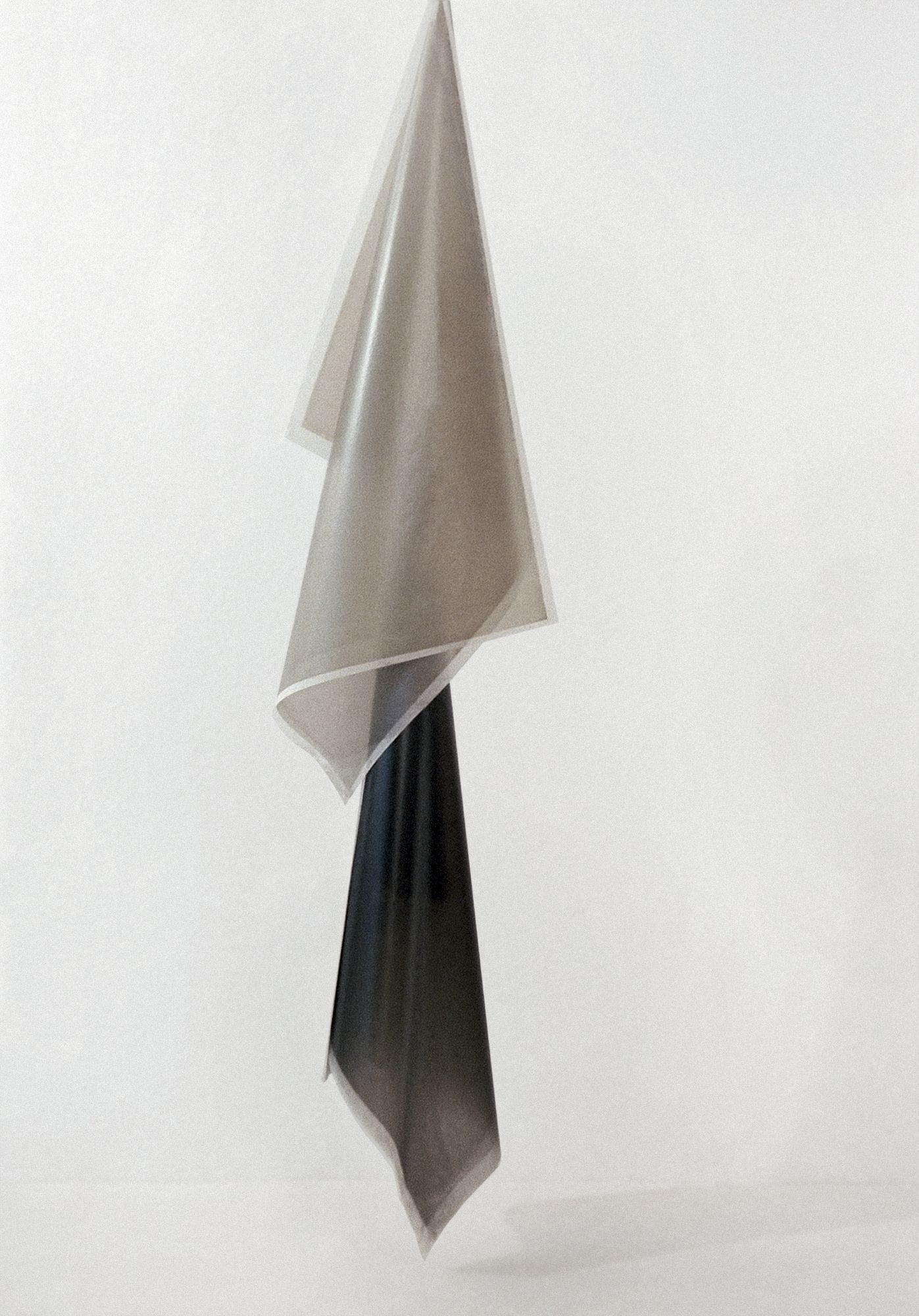Monochroms

Wincenty Dunikowski-Duniko, Hanging Monochromes, 1980
The artist first used monochromatically painted surfaces as early as in the late sixties, working on sketches for Moving Monochromes (1968), which would be an installation consisting of single-colour canvases stretched between two rolls rotating at a very low rate in order to constantly shift the minimalist planes.
This established a certain property of his later monochromatic works, the perception of which is different each time mainly due to how space and time are experienced, and to a lesser extent because of their materiality. The final stage of that journey, apparently, was the 1995 project titled Pure Light, Pure Love, Pure Death, where space permanently annexed by colour acquires meaning in the process of perceiving it.
The creation of Monochromes, which started in 1978, consisted in the use of semi-opaque paint, only partially absorbed by paper: as the works cannot dry completely, they exist in a permanent state of emergence, never formed definitively. Losing the original properties of liquids and solids respectively, the materialities of paint and paper have translated into coloured and at the same time translucent formations of planes, unable to be stored or displayed in a manner applicable to other two-dimensional works: they are fragile and fragrant, and their shiny surfaces interact with lighting to induce diametrically different experiences of colour tones.
The works from this series were sometimes hung with only one corner affixed, so that they naturally formed an array of conical spirals (Hanging Monochromes, 1980). The impossibility of displaying any of them again in exactly the same way manifested the expansion of the formulas of printmaking and painting towards spatial objects, and called for a reassessment of the related exhibiting systems.cji.
Written by Krzysztof Siatka